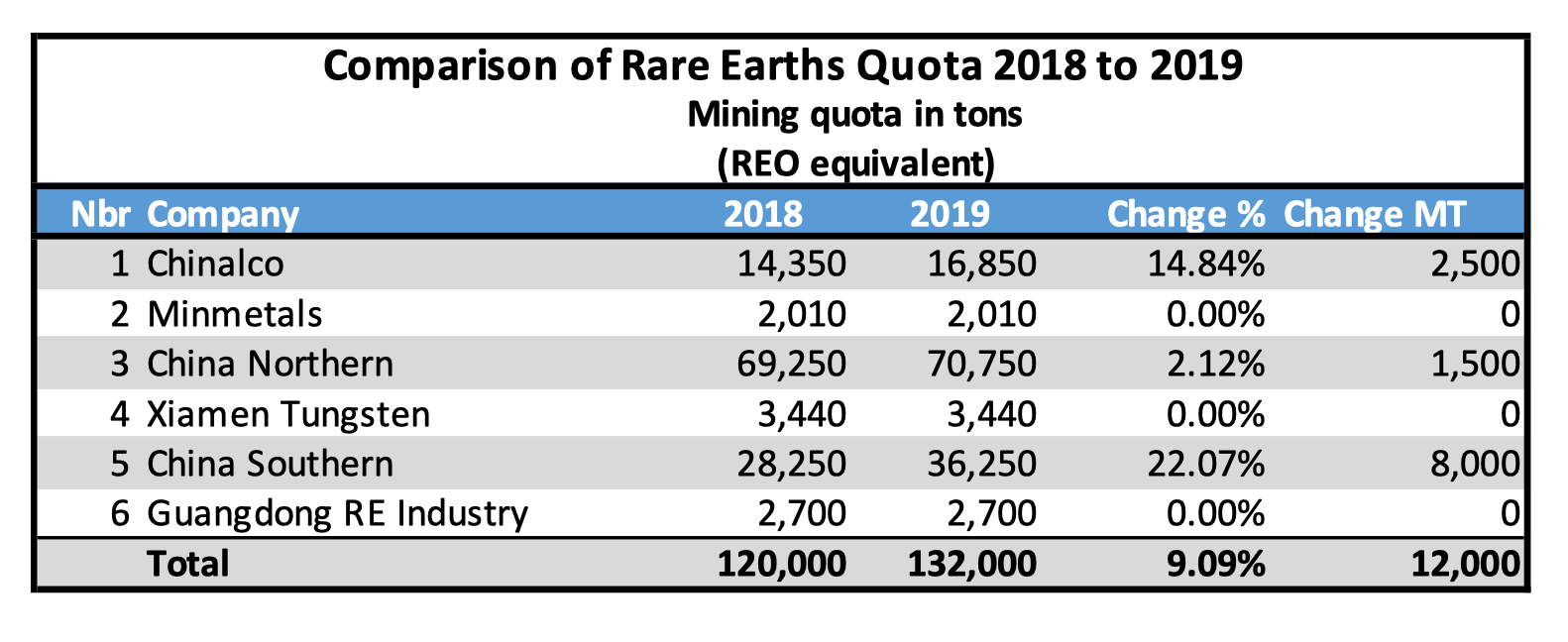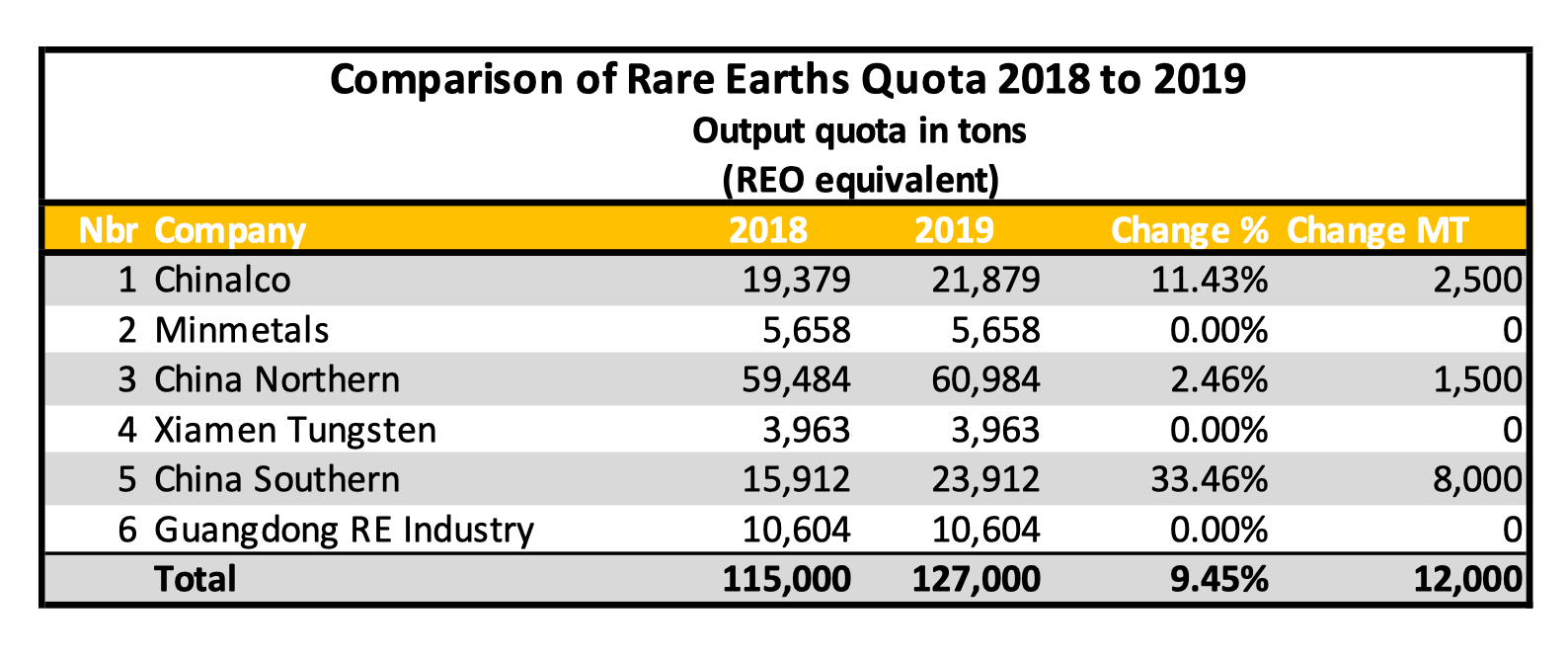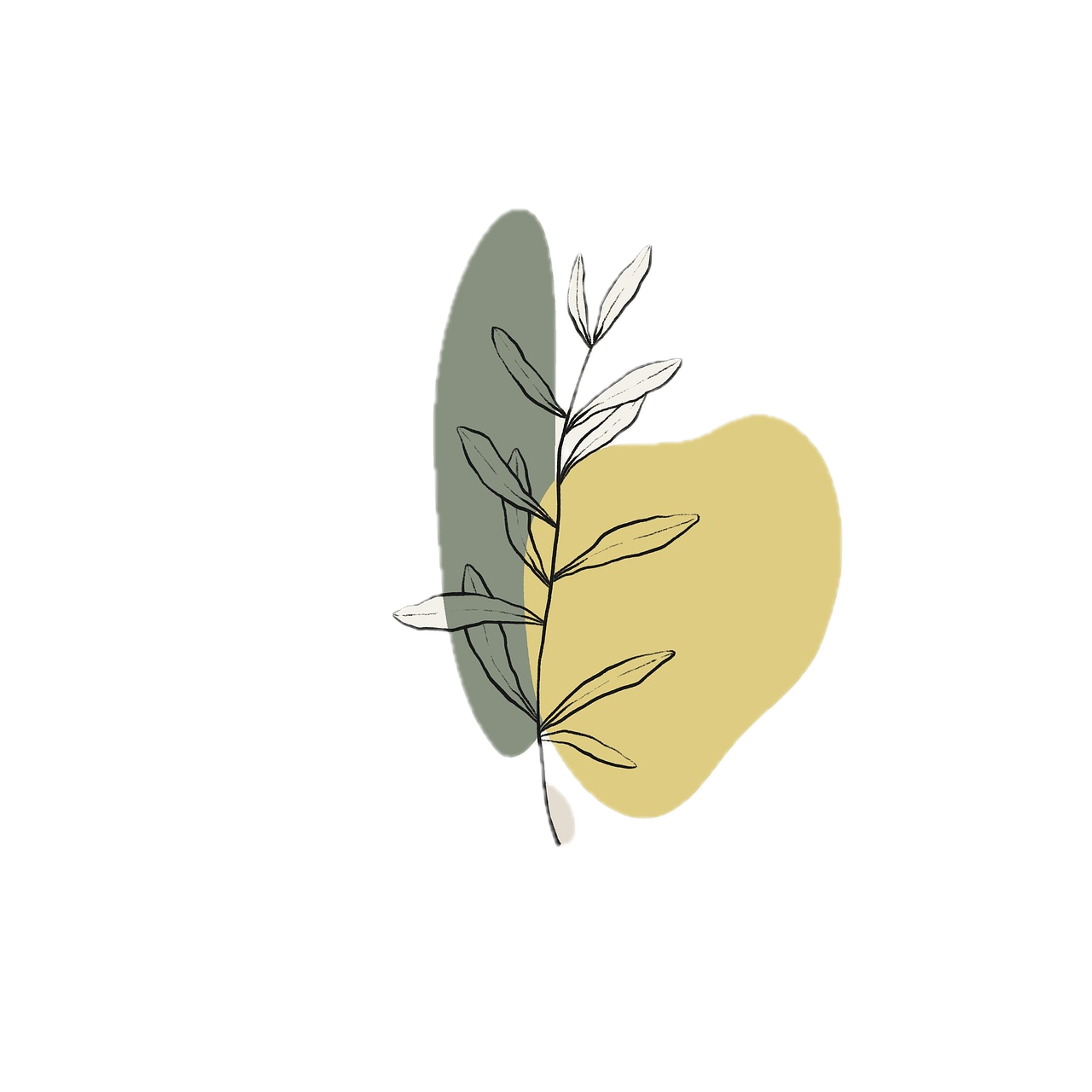China Rare Earths Quota 2019 - The Details
11 12 19 15:32
Production quota by each of the "Big 6" rare earth groups:
And here the quota breakdown by province:
Both as published on the Ministry of Industry & Information Technology website on November 8, 2019.


The quota increase of China Southern, whose output is overweight on heavy rare earths from ionised clay, points at a persistent shortage of dysprosium and terbium.
Both elements are used in rather small portions in NdFeB magnets, which consist mainly of light rare earths neodymium and praseodymium, in 70% magnetite.
However, we did not observe a shortage of neodymium or praseodymium, to the contrary. So the application in NdFeB magnets can't have driven the dysprosium and terbium shortage.
We are tempted to assume the driver for the shortage of dysprosium and terbium may have been increased demand for the special alloy 'Terfenol-D'.
And here the quota breakdown by province:
Both as published on the Ministry of Industry & Information Technology website on November 8, 2019.


The quota increase of China Southern, whose output is overweight on heavy rare earths from ionised clay, points at a persistent shortage of dysprosium and terbium.
Both elements are used in rather small portions in NdFeB magnets, which consist mainly of light rare earths neodymium and praseodymium, in 70% magnetite.
However, we did not observe a shortage of neodymium or praseodymium, to the contrary. So the application in NdFeB magnets can't have driven the dysprosium and terbium shortage.
We are tempted to assume the driver for the shortage of dysprosium and terbium may have been increased demand for the special alloy 'Terfenol-D'.


